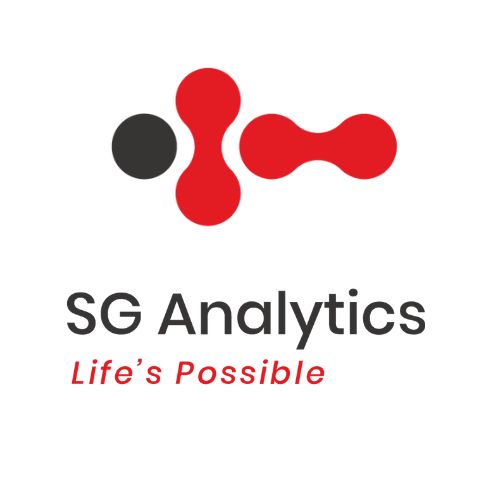Organizations seek scalability across data processing activities. Therefore, they want data lakes and warehouses. Such ecosystems are indispensable to businesses expecting sustainable, compliant data practices to thrive in the data-centric world. Both approaches to data storage and sorting serve entirely different purposes. Without understanding such differences, brands will fail at building an appropriate data infrastructure. This post will emphasize the difference between a data lake and a data warehouse.
What is a Data Lake?
A data lake is a centralized repository system. It stores raw data in its native form. Data lakes can be used to preserve structured, semi-structured, and unstructured data side-by-side. In other words, it can support everything, from JSON files and log data to images, videos, and documents. Reliable data lake capabilities are often built to scale as required. So, some data lakes can process petabytes of data. Amazon S3 and Azure Data Lake are some of the services used to create such setups.
Since data lakes do not need data to transform before storing it, they enable accelerated data processing and storage flexibility. Consequently, most data scientists and data engineers prefer leveraging data lakes to prototype and create machine learning models. Spotify is a noteworthy company that utilizes a data lake powered by Google Cloud to handle raw audio and user interaction data to customize recommendations.
Data lakes are best for global businesses wanting to embrace big data analytics or real-time streams of qualitative data insights. However, without proper outcome-linked managerial excellence, they can get chaotic. So, sorting and transforming data assets might become hard to perform.
Read more: What is Data Architecture – Complete Guide
What is a Data Warehouse?
A data warehouse is an organized data store. It helps multiple professionals who seek better reports and streamlined analyses. Unlike data lakes, data warehouses preserve already cleaned, transformed, and organized data. As a result, it becomes quicker and less arduous to execute queries. Besides, users can swiftly create dashboards their teams need and obtain the necessary insights.
Data warehouses are among the standard approaches to organizing data in finance, sales, and marketing. Today, Snowflake, Amazon Redshift, and Google BigQuery are well-known players in this domain.
They rely on a schema-on-write strategy. In other words, data organization must be adequate before loading the dataset into the designated system. Data warehouses, therefore, are reliable, especially for structured datasets with clearly defined relationships. For instance, banks use data warehouses to study customer transactions. Doing so assists them in identifying fraud patterns. This method also provides high performance and reliability. Still, it can be inflexible when dealing with intricate, mixed, or unstructured data types.
Read more: The True Cost of Bad Data: How Poor Data Governance Impacts ROI
The Difference Between a Data Lake and a Data Warehouse
1. How They Vary in Architecture
Data lake architecture is designed for immediate storage and offers remarkable scalability. That is why all analytical expectations come later. An enterprise data lake decouples storage and computing, enabling distinct users to scale and customize each operation on their own terms. Since it captures and stores data in the raw form, ingestion is fast. Besides, data lakes accommodate a broad range of open and proprietary file formats.
As of now, Hadoop and Apache Spark are commonly utilized with data lakes. They let stakeholders execute and benefit from distributed processing. This flexibility also makes data lakes an ideal fit for private firms, universities, and public administrations focused on research and development (R&D).
On the other hand, a data warehouse prioritizes performance, data structuring, and query speed. It fulfills those objectives by employing a tightly integrated architecture that provides storage, processing, and analytical capabilities. For illustration, typical enterprise data warehouses like Oracle Exadata adopt a monolithic design. At the same time, contemporary cloud-based warehouses, like Snowflake, segregate storage and computations. So, they can scale better.
Data warehouses also employ indexing, partitioning, and optimization. These measures speed up query response time. As a result, they are great for business intelligence (BI) applications where performance is of utmost importance.
Also read: Building a Data-First Culture: Why It is More Than Just Technology
2. Use Cases and Business Applications
Varying business requirements encourage brands to begin the implementation of a data lake or a data warehouse. You will find that the hypercompetitive firms that need high-end analytics, predictive analytics, or real-time processing often start off with a data lake. For instance, consider X (formerly Twitter), which uses a data lake-based architecture on Hadoop. It uses this approach to process user interaction data at a significantly large scale. Similar techniques help social networking firms to process trends, filter out spam, and enhance user engagement.
Simultaneously, established companies require rigid reports and dashboards. Therefore, they frequently depend on data warehouses. Think of a retailing chain. It would use a data warehouse to examine the sales performance in several regions.
A nice example is that of Starbucks. It relies on a data warehouse to monitor store performance as well as the behavior of its loyalty programs. Such business use cases are optimized to respond quickly and correctly once stakeholders enter precisely entered business queries. They also allow standardized SQL queries, many business intelligence tools, and intuitive dashboard visualizations.
3. Data Processing and Transformation
Data lakes have a schema-on-read strategy, and hence the data is interpreted at the time of read. This practice makes the data processing more rapid. Moreover, different transformations and filters can be performed according to the unique requirements of each analysis. Apache Hive and Presto are often the go-to options to query data in the lakes. Unfortunately, the flexibility is achieved at the expense of being slower for heavy queries.
Remember, data warehouses have a schema-on-write model in which data must conform to a pre-defined structure before the storage happens. This ensures consistency and enhances data quality. Data is usually extracted, transformed, and loaded (ETL) using software such as Informatica or Talend before it goes to the warehouse. The benefit is quicker and more consistent querying and analysis. Unlike data lakes, it takes more planning and engineering from the very start.
4. Cost and Scalability
Cost is also a critical consideration. Data lakes tend to be inexpensive to deploy, particularly for storing massive amounts of raw data. After all, they employ low-cost cloud object storage, like Amazon S3. They also scale horizontally, which makes them ideal for dynamic and unpredictable data growth. Today, research teams and startups tend to prefer data lakes to maintain low storage costs.
Data warehouses inevitably cost more because of the computing power and formality of design. Besides, licensing charges, maintenance costs, and costs of transforming the data can very quickly add up. Despite all that, cloud-based solutions such as Google BigQuery and Snowflake provide use-based pricing. This pricing strategy makes them more viable for companies, large and small.
5. Security and Governance
Security and governance are key functions in both data lakes and data warehouses. Data warehouses tend to have mature, native security capabilities. Access controls, encryption, and compliance features are also available across the related platforms, such as Snowflake and Amazon Redshift. This makes them appropriate for industries with heavy regulatory needs. Think of healthcare and finance.
Data lakes, though impactful and fast, can be a security headache. Since they take in data of all types and formats, maintaining steady governance is more challenging. That is why additional tools such as Apache Ranger or AWS Lake Formation must be present to ensure proper access control and auditing. Data lakes can turn into “data swamps” due to poor management. Planning must be meticulous.
Conclusion: Data Lake vs. Data Warehouse – Choose the Right Approach
Both data lakes and data warehouses are vital components in contemporary data architecture despite the differences between them. They perform disparate functions across distinct types of data-handling activities. A data lake provides scalability, flexibility, and cost-effectiveness for raw and unstructured data. A data warehouse, on the other hand, provides speed, structure, and dependability for business analytics workloads.
Most modern organizations often utilize these systems in combination with one another within a contemporary data stack. They can, for instance, save raw event logs to a data lake such as Azure Data Lake and subsequently transfer cleaned and enriched data into a warehouse such as Snowflake for business reporting. This allows both worlds, the robust analytical features along with loose experimentation, to lead to better outcomes in unison. Ultimately, recognizing the distinction aids businesses in making informed choices about their data infrastructure.
About SG Analytics
SG Analytics (SGA) is an industry-leading global data solutions firm providing data-centric research and contextual analytics services to its clients, including Fortune 500 companies, across BFSI, Technology, Media & Entertainment, and Healthcare sectors. Established in 2007, SG Analytics is a Great Place to Work® (GPTW) certified company with a team of over 1200 employees and a presence across the U.S.A., the UK, Switzerland, Poland, and India.
Apart from being recognized by reputed firms such as Gartner, Everest Group, and ISG, SGA has been featured in the elite Deloitte Technology Fast 50 India 2023 and APAC 2024 High Growth Companies by the Financial Times & Statista.

